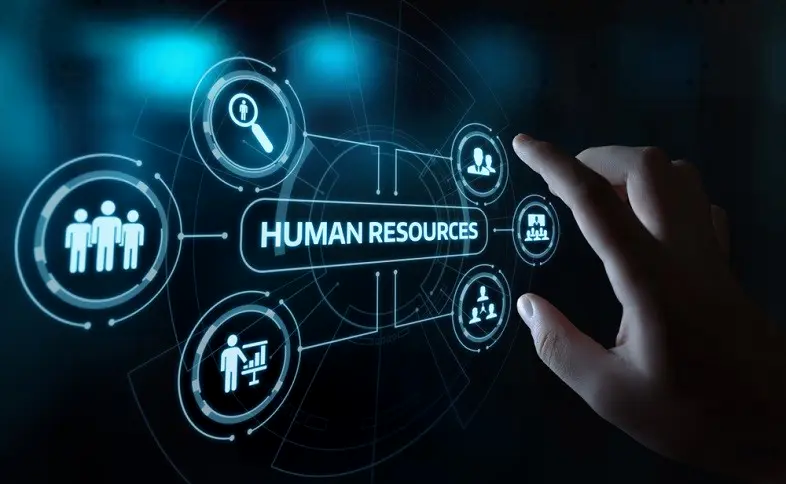Introduction to Resource Technology
Resource technology refers to the innovative use of modern tools and systems to manage, optimize, and sustain natural and artificial resources efficiently. As the global population continues to rise, the need for sustainable resource management has become increasingly critical. From managing energy to ensuring food security, resource technology plays a pivotal role in maintaining balance while addressing challenges posed by climate change, population growth, and resource depletion.
In today’s interconnected world, the focus has shifted toward creating technologies that not only maximize the use of available resources but also do so in a manner that protects the environment. The convergence of technology and resource management offers unprecedented opportunities to create a more sustainable future.
Historical Evolution of Resource Technology
The concept of resource technology is not new. The journey of human civilization has been marked by various technological advancements, all aimed at better resource utilization. In early human history, tools and innovations were developed to make hunting, gathering, and farming more efficient. With the advent of the industrial revolution, resource technology experienced significant shifts, particularly in how energy resources such as coal and oil were extracted and used.
As societies progressed, the focus broadened to include conservation efforts and renewable resources, leading to significant innovations in energy, agriculture, and water management. Today, resource technology encompasses cutting-edge fields such as artificial intelligence, blockchain, and smart systems, all aimed at optimizing the use of resources in ways previously unimaginable.
Core Components of Resource Technology
Resource technology can be broadly divided into two categories: renewable and non-renewable resource management. While renewable resources like solar, wind, and water are infinite, non-renewable resources such as coal, oil, and natural gas are finite and must be managed with caution. Technological advances in both these areas are essential to ensure that resources are utilized optimally, with minimal environmental impact.
Renewable Energy Technologies
The shift toward renewable energy sources has been one of the most significant advancements in resource technology. Solar panels, wind turbines, and hydropower stations have transformed the way we generate electricity. Solar energy harnesses the power of the sun through photovoltaic cells, converting sunlight directly into electricity. Wind energy captures kinetic energy from wind, and hydropower uses the energy of flowing water to generate power. These technologies have helped reduce dependence on fossil fuels and have become cornerstones in the fight against climate change.
Non-renewable Resource Management
Though renewable resources are the future, non-renewable resources like fossil fuels still play a significant role in today’s economy. Resource technology in this area focuses on more efficient extraction, consumption, and conservation methods. Carbon capture and storage (CCS) technologies, for example, aim to reduce carbon emissions from power plants, while advances in fuel efficiency help minimize the environmental impact of fossil fuel usage.

Key Innovations Driving Resource Technology
Several key innovations have emerged, each playing a vital role in advancing resource technology. These include artificial intelligence (AI), blockchain, and the Internet of Things (IoT).
The Role of AI in Resource Optimization
Artificial intelligence is revolutionizing the way resources are managed. In energy, AI can predict consumption patterns, optimizing the distribution and use of electricity. In agriculture, AI-driven systems analyze soil data, weather patterns, and crop health to maximize yields while reducing water and fertilizer usage. These predictive systems not only enhance efficiency but also reduce wastage.
Blockchain for Sustainable Resource Use
Blockchain technology, originally designed for financial transactions, has found new applications in resource management. By providing transparency in supply chains, blockchain ensures that resources are sourced and used responsibly. This technology helps reduce fraud, wastage, and mismanagement, making it a crucial tool in the future of resource technology.
IoT and Smart Systems in Resource Management
The Internet of Things (IoT) connects devices and systems, enabling real-time monitoring and control over resource consumption. Smart grids, for example, help manage energy distribution more efficiently, while smart irrigation systems in agriculture ensure that water is used only when needed. These innovations are making resource management more intelligent and responsive.
Environmental Impact of Resource Technology
One of the primary goals of resource technology is to minimize the environmental impact of human activity. From reducing greenhouse gas emissions to managing waste more effectively, technology is helping to address some of the biggest environmental challenges.
Circular Economy and Resource Technology
The concept of the circular economy is gaining traction, with resource technology playing a central role. In a circular economy, waste is minimized, and products are designed for reuse, recycling, or repurposing. Technologies such as waste-to-energy systems and advanced recycling processes are helping to create a more sustainable and efficient use of resources.
Resource Technology in Agriculture
In agriculture, resource technology has enabled the development of precision farming, which uses data and analytics to optimize crop production. Water-saving irrigation systems, soil health monitoring, and crop management tools have revolutionized the way food is grown, reducing water and fertilizer usage while increasing yields.
Challenges in Implementing Resource Technology
Despite the many advantages of resource technology, there are significant challenges in implementing it on a global scale. Financial barriers, technological accessibility in developing nations, and political hurdles all play a role in slowing down the adoption of new technologies. Addressing these challenges will be critical to ensuring that resource technology can reach its full potential.

Future of Resource Technology
The future of resource technology is bright, with numerous emerging trends on the horizon. These include advancements in renewable energy storage, innovations in water desalination, and the integration of AI into every aspect of resource management. Both governments and private sectors will play a crucial role in driving these technologies forward, ensuring that they are accessible and affordable for all.
Conclusion
In conclusion, resource technology represents the future of sustainable development. As we continue to face challenges such as climate change, population growth, and resource scarcity, it will be the innovations in this field that help us navigate these difficulties and create a more sustainable world. The road ahead is filled with opportunities for growth, and with continued investment and innovation, resource technology will shape the future for generations to come.
Frequently Asked Questions (FAQs)
- What is resource technology?
- Resource technology refers to the use of modern tools and systems to manage, optimize, and sustain resources efficiently, focusing on both renewable and non-renewable resources.
- Why is resource technology important?
- It is crucial for sustainable development, helping to reduce environmental impact, manage resources efficiently, and address challenges like climate change and resource depletion.
- How does AI help in resource technology?
- AI optimizes resource use by predicting consumption patterns, analyzing data for efficiency, and minimizing wastage, particularly in energy and agriculture.
- What role does blockchain play in resource management?
- Blockchain provides transparency and accountability in resource supply chains, reducing fraud and ensuring responsible sourcing and consumption.
- What are some examples of renewable resource technologies?
- Solar panels, wind turbines, and hydropower are key renewable technologies that generate clean energy and reduce reliance on fossil fuels.
- What challenges does resource technology face?
- Major challenges include financial barriers, technological accessibility in developing regions, and political resistance to change.
